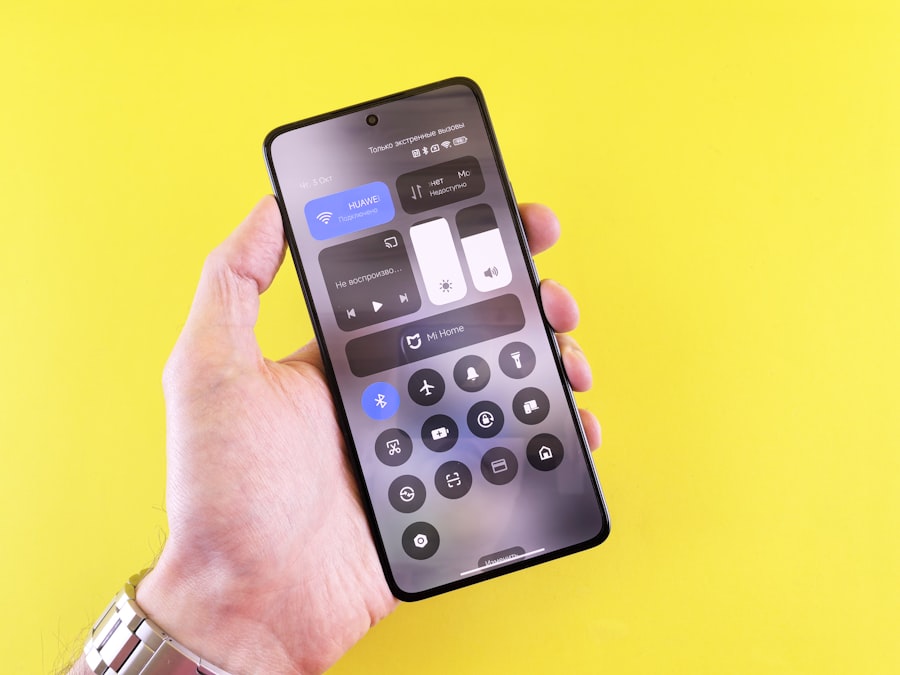In today’s fast-paced digital landscape, notifications have become an integral part of your daily life. Every ping, buzz, or vibration from your device is designed to capture your attention, often leading to a cascade of reactions in your brain. Neuroscience reveals that these notifications trigger a complex interplay of cognitive processes, primarily involving the release of neurotransmitters that affect your mood and focus.
When you receive a notification, your brain’s reward system is activated, releasing chemicals that create feelings of pleasure and anticipation. This response can be likened to the way your brain reacts to other rewarding stimuli, such as food or social interactions. Moreover, the constant influx of notifications can lead to a state of hyperarousal, where your brain becomes conditioned to expect immediate feedback.
This expectation can alter your attention span and cognitive functioning, making it increasingly difficult to concentrate on tasks that require sustained focus. As you navigate through your day, the barrage of notifications can create a sense of urgency that compels you to respond immediately, often at the expense of deeper engagement with your surroundings or responsibilities. Understanding this neurological response is crucial in recognizing how notifications shape not only your behavior but also your overall mental landscape.
Key Takeaways
- Notifications trigger a release of dopamine in the brain, contributing to addiction-like behaviors.
- Excessive notifications hijack attention and reduce productivity, leading to negative impacts on mental health.
- Instant gratification drives the need for constant notifications, creating compulsive habits.
- Social and cultural factors play a role in the development of notification addiction.
- Setting boundaries and managing notification overload is crucial for maintaining a healthy relationship with technology.
The Role of Dopamine in Driving our Notification Addiction
Dopamine, often referred to as the “feel-good” neurotransmitter, plays a pivotal role in your relationship with notifications. Each time you receive a notification and respond to it, your brain releases dopamine, reinforcing the behavior and creating a cycle of reward and reinforcement. This biochemical reaction is akin to a reward system that encourages you to seek out more notifications, leading to what many experts describe as an addiction.
The anticipation of receiving a notification can be just as rewarding as the notification itself, creating a powerful drive to check your device frequently. This cycle can lead to compulsive behavior, where you find yourself constantly checking your phone or other devices for updates. The more you engage with notifications, the more dopamine is released, further entrenching this habit.
Over time, this can create a dependency on the instant gratification that notifications provide, making it challenging for you to resist the urge to check your device even when it may not be necessary. Recognizing the role of dopamine in this process is essential for understanding how deeply ingrained these habits can become and why breaking free from them requires conscious effort.
How Notifications Hijack our Attention and Productivity

Notifications are designed to be attention-grabbing, often interrupting your flow and diverting your focus from important tasks. Each time you receive a notification, it demands your immediate attention, pulling you away from what you were doing and fragmenting your concentration. This constant interruption can lead to a phenomenon known as “task-switching,” where you find yourself jumping from one task to another without completing any of them effectively.
Research indicates that this kind of multitasking can reduce productivity by as much as 40%, making it clear that notifications are not just minor distractions; they are significant barriers to effective work. Furthermore, the cumulative effect of these interruptions can lead to increased stress and anxiety. As you struggle to manage multiple tasks while responding to notifications, you may feel overwhelmed by the pressure to stay connected and responsive.
This can create a vicious cycle where the need to check notifications becomes more pronounced as deadlines loom or responsibilities pile up. By understanding how notifications hijack your attention and disrupt your productivity, you can begin to take steps toward regaining control over your focus and time management.
The Evolution of Notifications: From Helpful Reminders to Compulsive Habits
| Year | Number of Notifications | Percentage of Users |
|---|---|---|
| 2010 | 10 per day | 50% |
| 2015 | 50 per day | 70% |
| 2020 | 100 per day | 90% |
Initially, notifications were designed with good intentions—to serve as helpful reminders for important events or messages. They were meant to enhance productivity and keep you organized in an increasingly busy world. However, as technology has evolved, so too has the nature of notifications.
What began as simple alerts for emails or calendar events has transformed into a relentless stream of updates from social media, messaging apps, and various platforms vying for your attention. This shift has turned notifications from useful tools into compulsive habits that can dominate your daily routine. As technology companies compete for user engagement, they have refined their notification systems to be more enticing and frequent.
The result is an environment where notifications are not just helpful reminders but also sources of distraction that can lead to compulsive checking behaviors. You may find yourself scrolling through social media feeds or checking messages even when there’s no pressing need to do so. This evolution highlights the need for critical reflection on how these tools impact your life and whether they serve your best interests or contribute to a cycle of distraction and dependency.
The Psychological Need for Instant Gratification and its Influence on Notifications
The digital age has fostered a culture of instant gratification, where immediate rewards are not only expected but also sought after. Notifications play a significant role in this phenomenon by providing quick bursts of information that satisfy your desire for instant feedback and engagement. This psychological need for immediate gratification can lead you to prioritize short-term rewards over long-term goals, making it difficult to focus on tasks that require sustained effort and patience.
As you become accustomed to the quick fixes provided by notifications, you may find it increasingly challenging to engage in activities that do not offer immediate rewards. This shift in mindset can affect various aspects of your life, from work performance to personal relationships. The allure of instant gratification can overshadow the importance of deep work and meaningful interactions, leading you to miss out on opportunities for growth and fulfillment.
Recognizing this psychological influence is crucial in understanding how notifications shape not only your behavior but also your overall approach to life.
The Social and Cultural Factors Contributing to Notification Addiction

Your relationship with notifications is not solely a personal issue; it is also influenced by broader social and cultural factors. In an age where connectivity is paramount, there is an implicit pressure to remain constantly available and responsive. Social norms dictate that being “plugged in” is synonymous with being engaged and productive, leading many individuals to feel compelled to check their devices frequently.
This cultural expectation can create a sense of obligation that drives notification addiction. Moreover, social media platforms have capitalized on this cultural shift by designing their systems to encourage frequent interaction and engagement.
As you navigate this landscape, it’s essential to recognize how these social pressures contribute to your notification habits and consider ways to cultivate healthier relationships with technology that prioritize well-being over constant connectivity.
The Negative Impact of Excessive Notifications on Mental Health
The relentless barrage of notifications can take a toll on your mental health in various ways. Studies have shown that excessive notification engagement is linked to increased levels of anxiety and stress. The constant need to respond can create feelings of overwhelm and pressure, leading you to feel as though you are never truly “off duty.” This state of perpetual connectivity can hinder your ability to relax and recharge, contributing to burnout and fatigue.
Additionally, excessive notifications can exacerbate feelings of loneliness and isolation. While technology is often touted as a means of fostering connection, the superficial nature of many online interactions can leave you feeling more disconnected than ever. The pressure to maintain an online presence while managing real-life relationships can create a sense of dissonance that negatively impacts your emotional well-being.
Acknowledging these negative effects is crucial in taking proactive steps toward managing your notification habits and prioritizing mental health.
Strategies for Managing and Reducing Notification Overload
To combat notification overload, it’s essential to implement strategies that help you regain control over your digital environment. One effective approach is to customize your notification settings across various apps and platforms. By prioritizing which notifications are truly important—such as work-related alerts or messages from close friends—you can significantly reduce the number of distractions vying for your attention throughout the day.
Another strategy involves setting specific times for checking notifications rather than allowing them to interrupt your workflow continuously. Designating “phone-free” periods during which you focus solely on tasks without distractions can enhance productivity and improve overall well-being. Additionally, consider utilizing tools such as “Do Not Disturb” modes or app blockers during critical work periods or personal time.
By consciously managing how and when you engage with notifications, you can cultivate healthier habits that promote focus and mindfulness.
The Ethical Responsibility of Tech Companies in Managing Notification Addiction
As users become increasingly aware of the impact of notifications on their lives, there is a growing call for tech companies to take ethical responsibility in managing notification systems.
It is essential for these companies to prioritize user welfare by implementing features that promote healthier usage patterns.
This could include offering users more control over their notification settings or providing insights into their usage patterns so they can make informed decisions about their digital habits. Additionally, tech companies should consider designing features that encourage breaks from constant connectivity rather than perpetuating cycles of engagement that lead to addiction. By taking these steps, tech companies can play a pivotal role in fostering healthier relationships between users and technology.
The Importance of Setting Boundaries and Establishing Healthy Notification Habits
Establishing boundaries around notifications is crucial for maintaining a balanced relationship with technology. You might start by identifying specific times during the day when you will check notifications—perhaps during breaks or designated periods after completing tasks—rather than allowing them to dictate your attention throughout the day. Communicating these boundaries with colleagues or friends can also help manage expectations regarding response times.
Additionally, consider creating physical boundaries by designating certain areas or times in your home where devices are not allowed—such as during meals or before bedtime—to foster more meaningful interactions with those around you or promote better sleep hygiene. By consciously setting boundaries around notifications, you empower yourself to reclaim control over your time and attention.
Finding Balance: Navigating the Digital World without Falling Prey to Notification Addiction
Ultimately, finding balance in navigating the digital world requires intentionality and self-awareness. As you strive to manage notification overload, it’s essential to cultivate mindfulness about how technology impacts your daily life. Regularly assess how notifications affect your mood, productivity, and relationships; this reflection will help you identify patterns that may need adjustment.
Engaging in activities that promote well-being—such as spending time outdoors, practicing mindfulness techniques like meditation or yoga, or pursuing hobbies—can also help counteract the effects of excessive notifications. By prioritizing these activities alongside mindful technology use, you can create a more harmonious relationship with digital devices while minimizing the risk of falling prey to notification addiction. In conclusion, understanding the science behind notifications and their impact on your brain is crucial in navigating today’s digital landscape effectively.
By recognizing the role of dopamine in driving addiction, acknowledging social pressures, and implementing strategies for managing notification overload, you can cultivate healthier habits that promote well-being in an increasingly connected world.
In today’s digital age, the constant urge to check notifications can be overwhelming, often leading to a cycle of distraction and reduced productivity. This behavior is driven by the brain’s reward system, which releases dopamine each time we receive a new notification, creating a habit loop that is hard to break. For a deeper understanding of this phenomenon and strategies to manage it, you can explore a related article on the topic by visiting Unplugged Psych. This resource delves into the psychological mechanisms behind our attachment to digital alerts and offers practical advice on how to regain control over our attention.
LEARN WHY Your Brain Isn’t Addicted to Likes; the Algorithm Gaslights You Daily, Hard.
FAQs
What are notifications?
Notifications are alerts or messages that inform you about new activity or updates on your electronic devices, such as smartphones, tablets, and computers. They can come from various apps, social media platforms, emails, and messaging services.
Why do people constantly check their notifications?
People often feel the need to constantly check their notifications due to the fear of missing out on important information or updates. The instant gratification and dopamine release from receiving notifications also contribute to the habit of constantly checking.
How do notifications affect our behavior?
Notifications can lead to increased stress, anxiety, and decreased productivity. The constant interruptions from notifications can disrupt our focus and make it difficult to concentrate on tasks.
What is the impact of excessive notification checking on mental health?
Excessive notification checking can contribute to feelings of anxiety, overwhelm, and addiction to technology. It can also lead to decreased quality of sleep and increased levels of stress.
How can one reduce the urge to constantly check notifications?
To reduce the urge to constantly check notifications, one can try turning off non-essential notifications, setting specific times to check for updates, and practicing mindfulness and self-discipline when it comes to using electronic devices. It’s also important to set boundaries and prioritize mental well-being.




